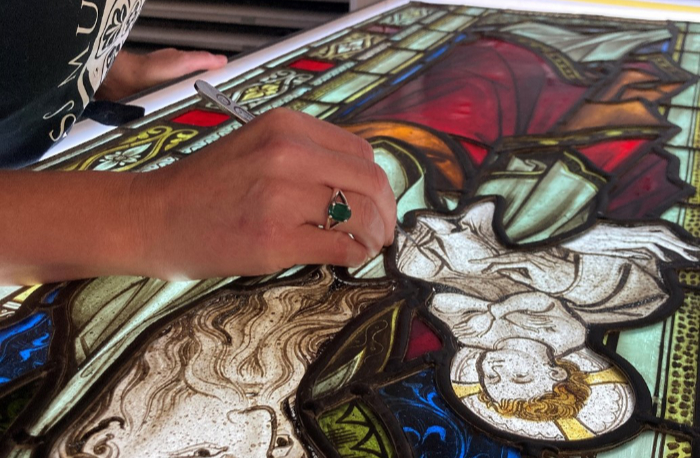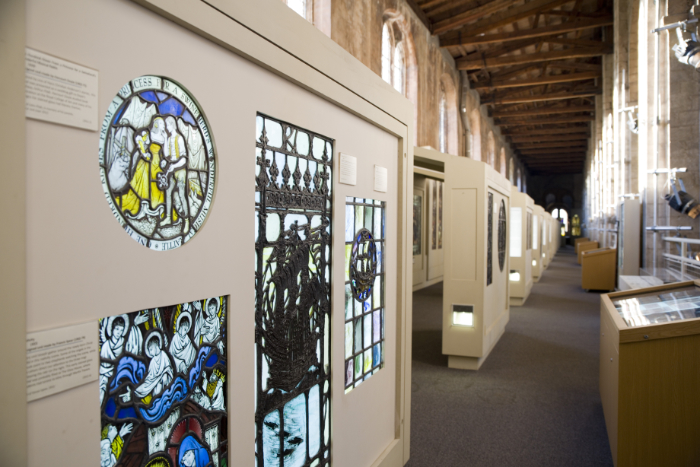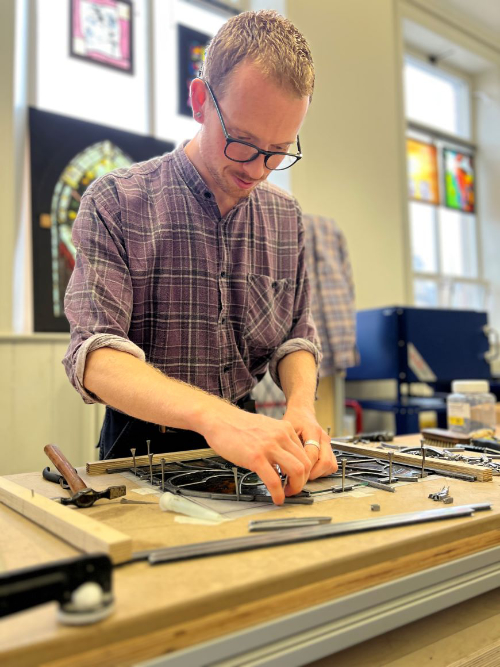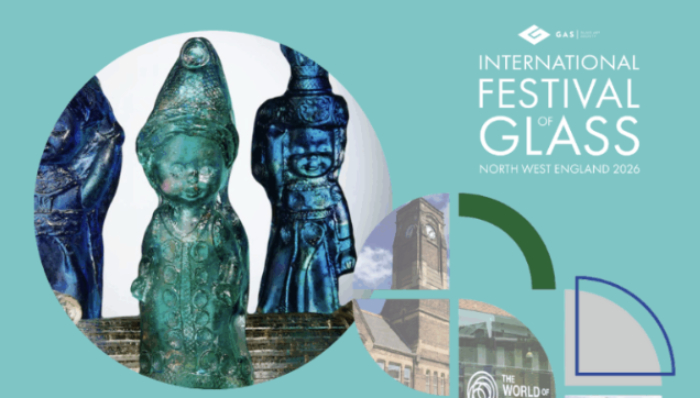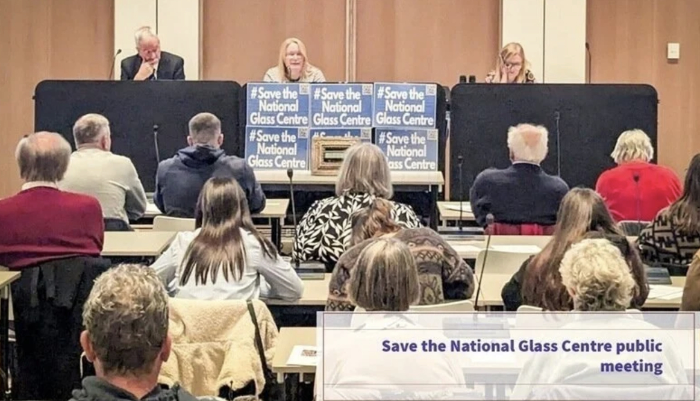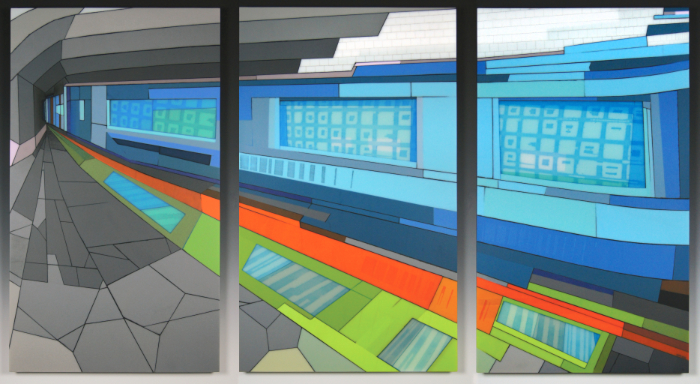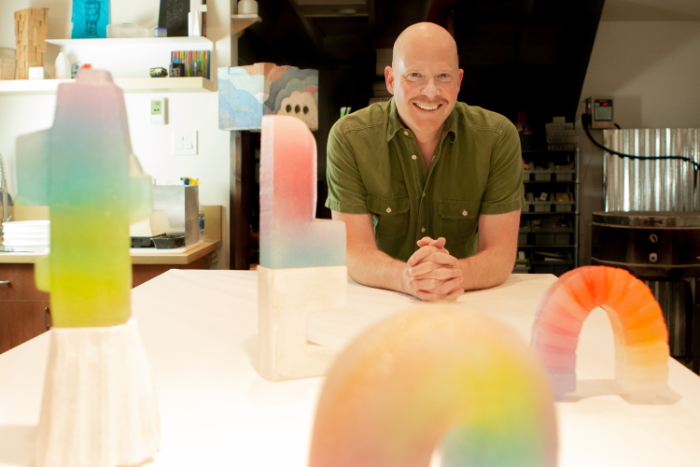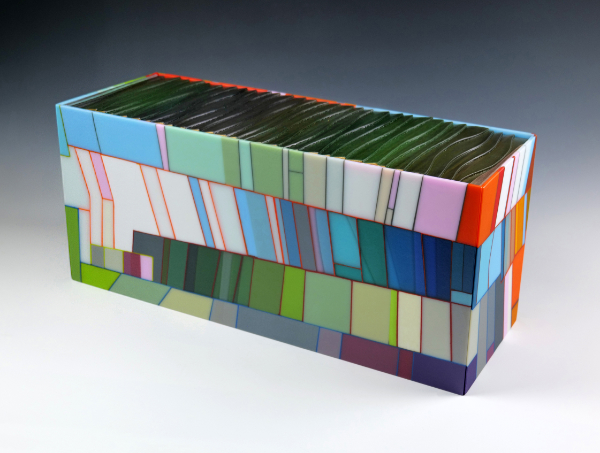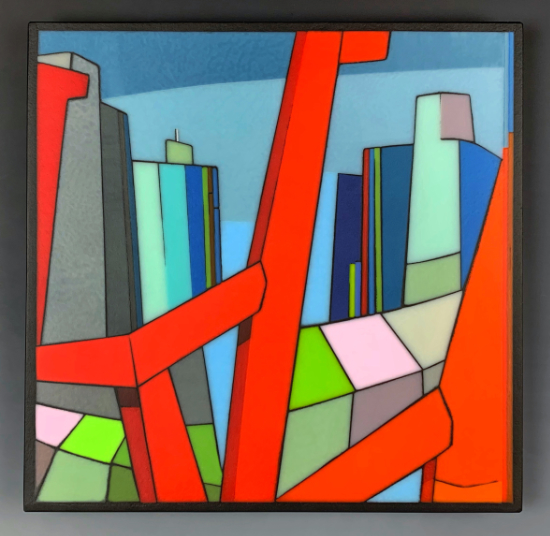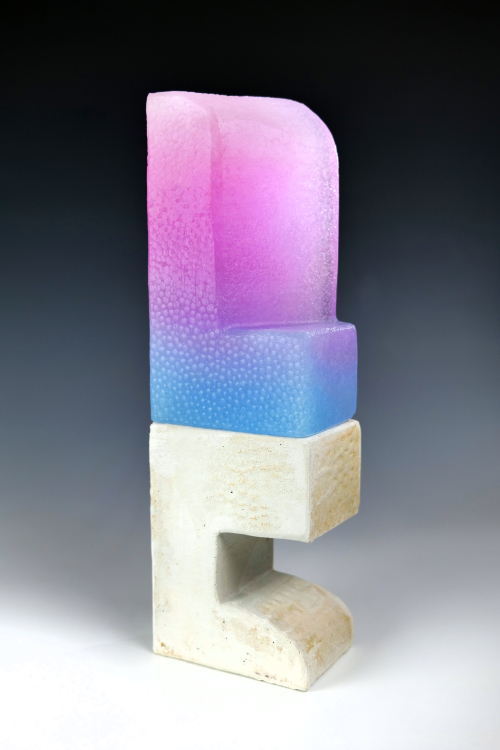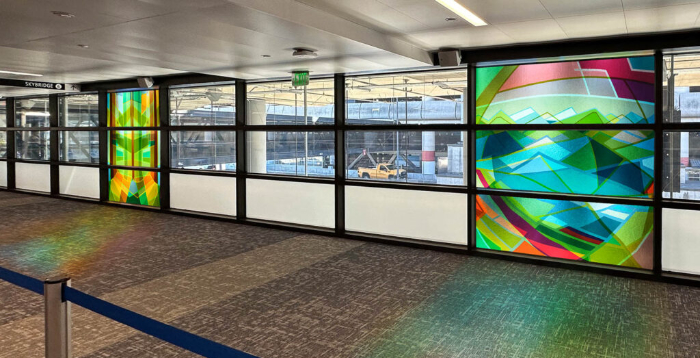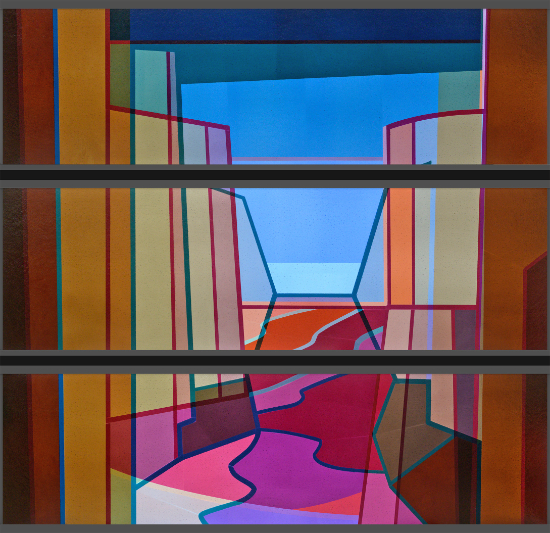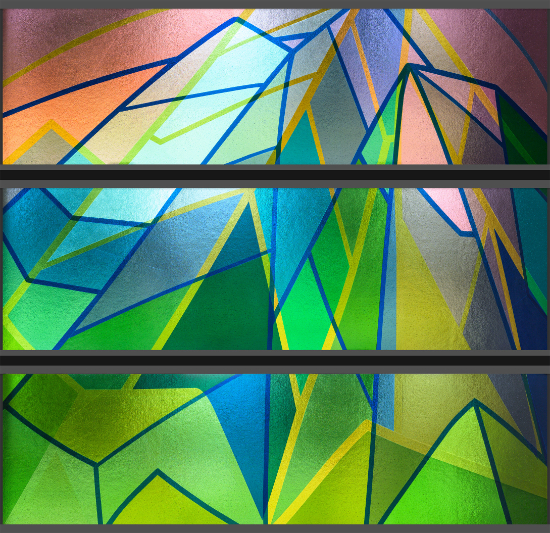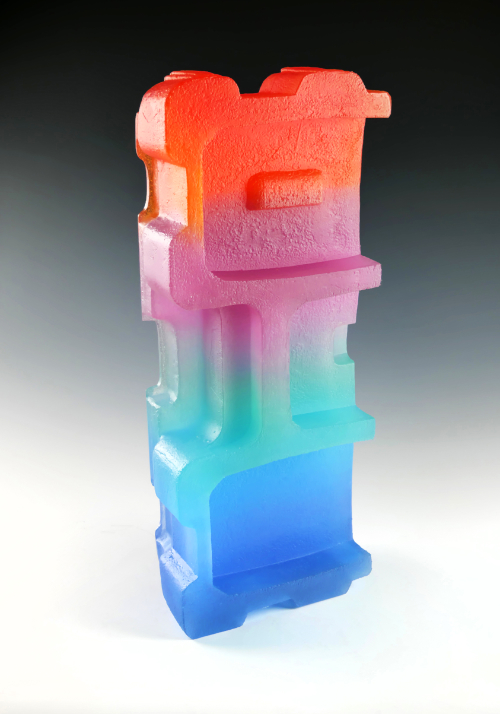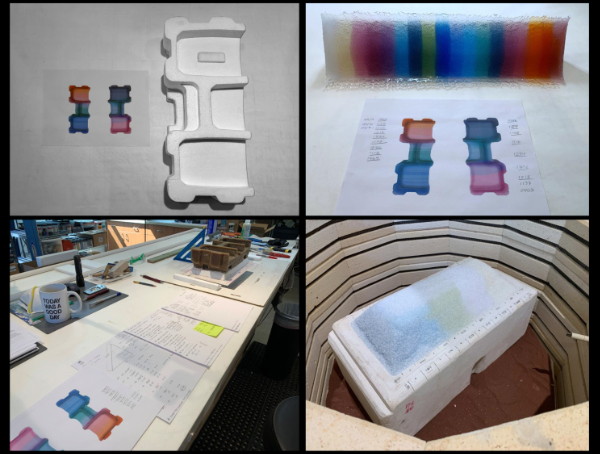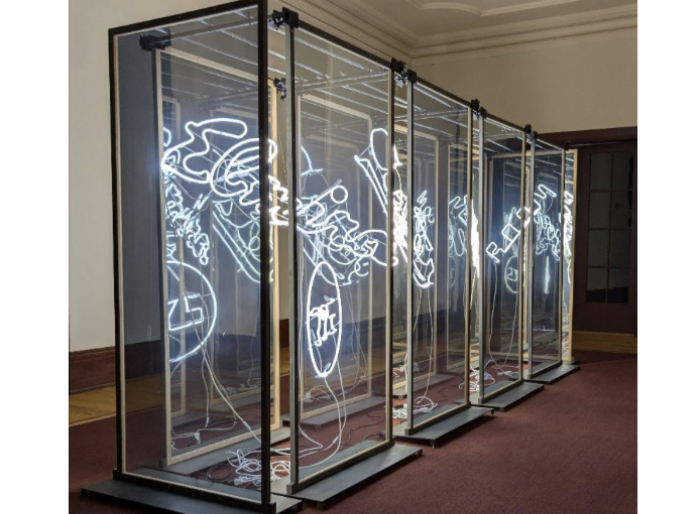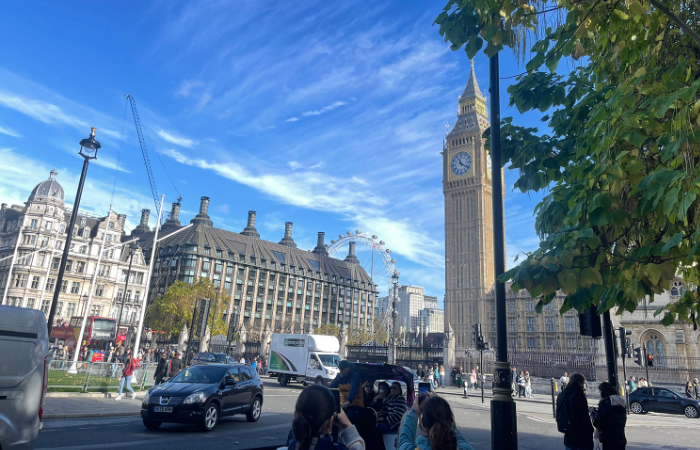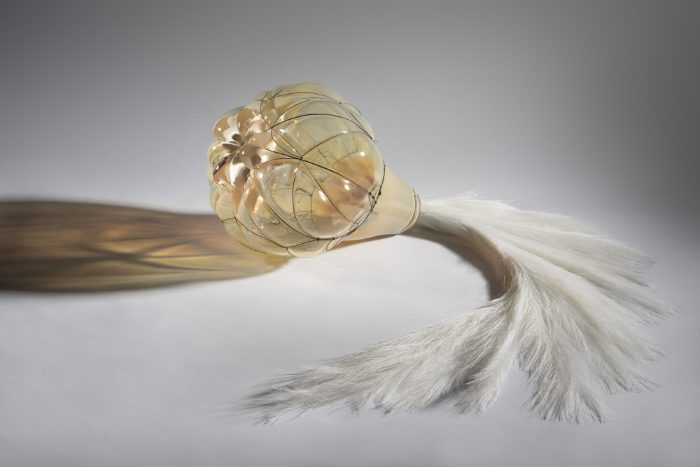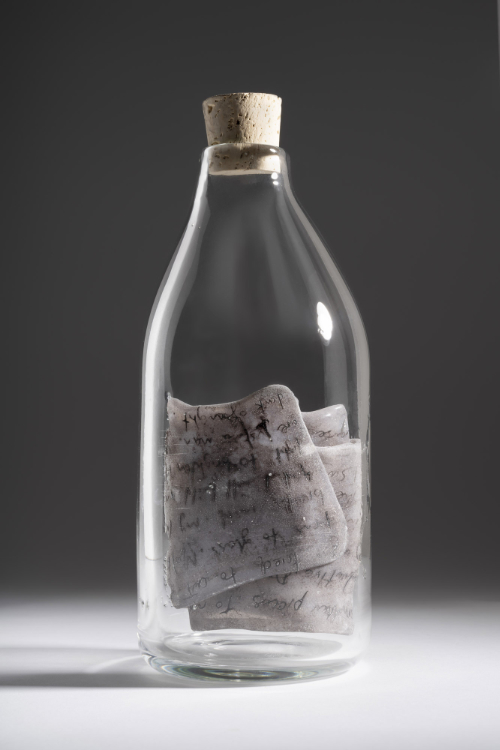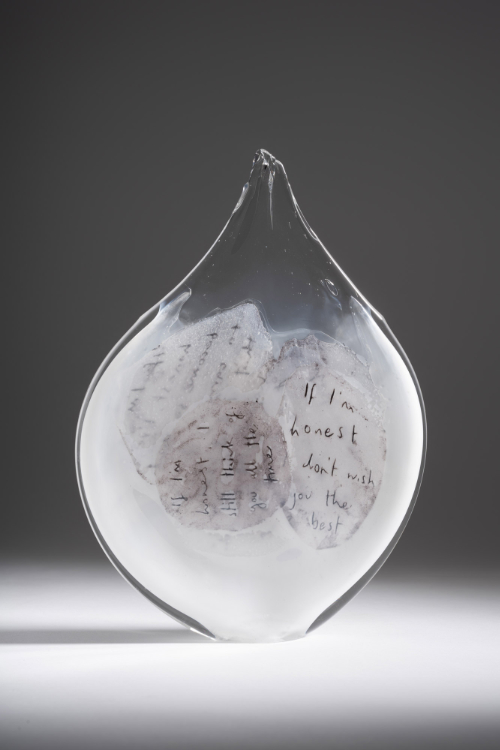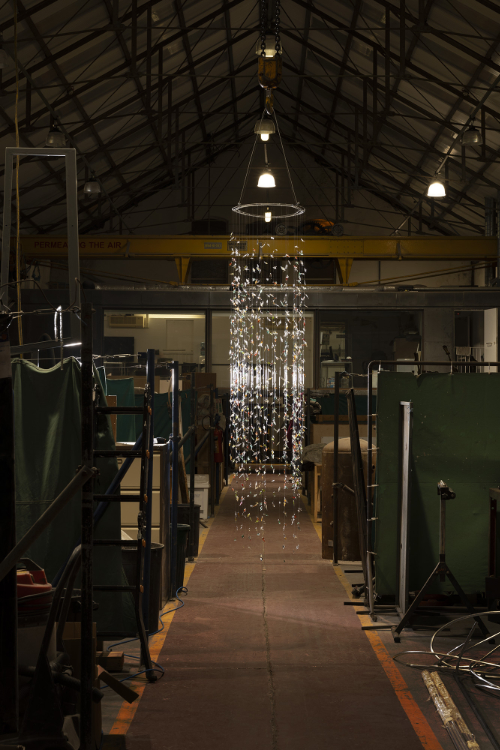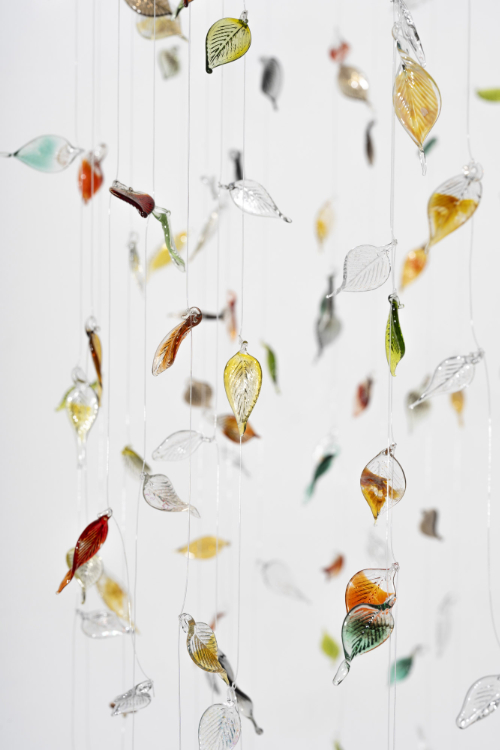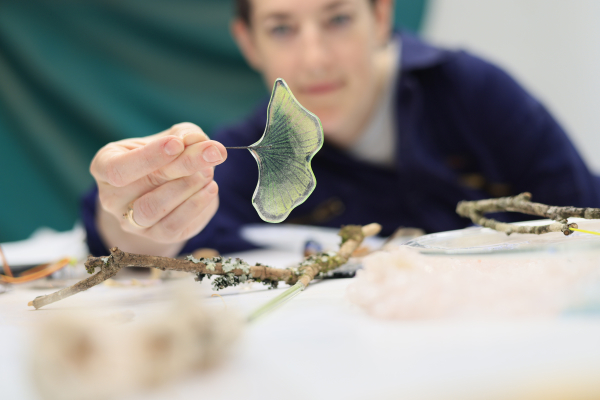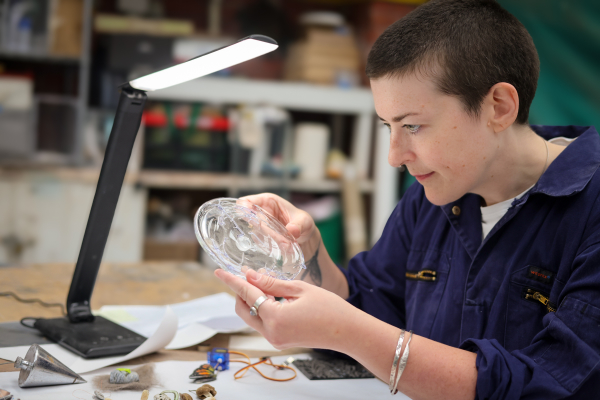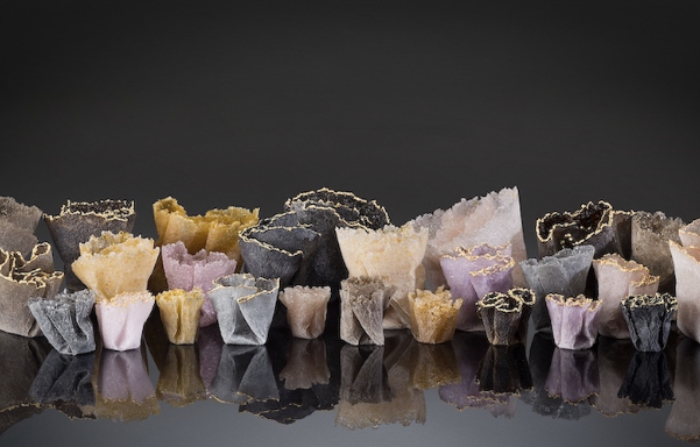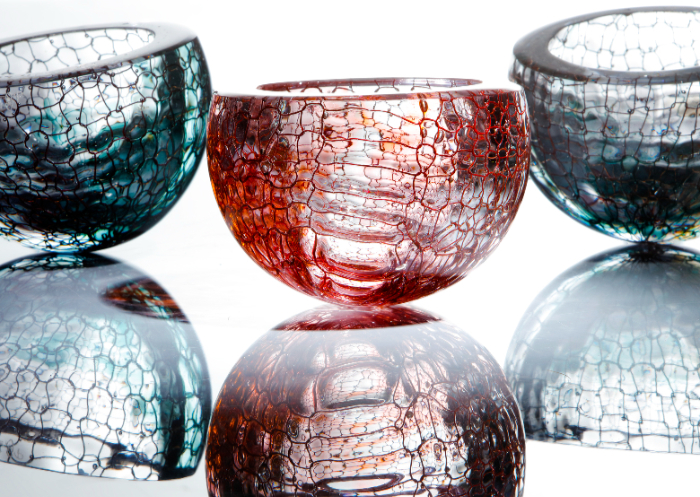
Emmy Palmer found fame in the BBC tv series Make It At Market in 2021, with her trademark knitted wire work that was encased in blown and polished glass. Here she explains how her glass practice has evolved since then.
Throughout my life I have found joy in making, although I never saw my creativity as a career choice until I was in my twenties. This is when I started my journey into applied arts. At first, I enjoyed trying out a broad range of material practices and learned so many techniques, but I found my place in large-scale metals.
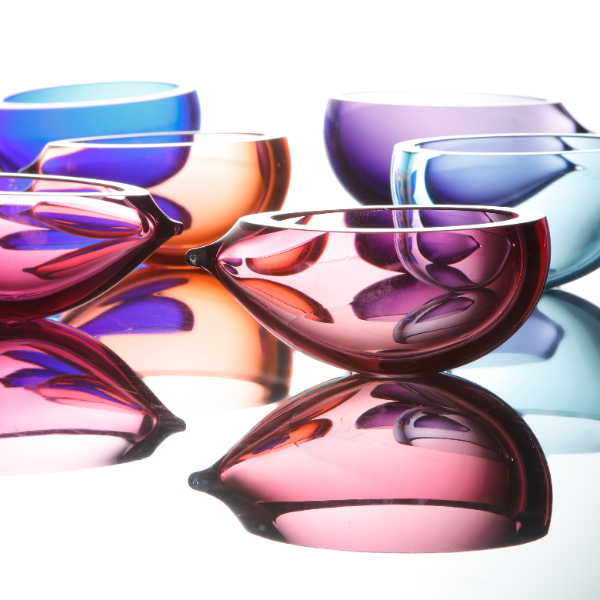
At this time, Dale Chihuly’s chandelier in the V&A Museum inspired me to take a taster course with a local glass blower. Creating my first wobbly glass blobs ignited something in me that has never been quenched.
In 2004 I moved on to do a Foundation in Applied Arts at Arts University Plymouth (formerly Plymouth College of Art and Design). I entered that course very determined to combine large-scale metals and blown glass, but my creative exploration took me in a slightly different direction. I specialised in blown glass in my second year and followed my Foundation with a BA (Hons) Applied Arts. In my final year I was lucky enough to be awarded a scholarship with Teign Valley Glass Studios and have continued a professional relationship with them ever since.
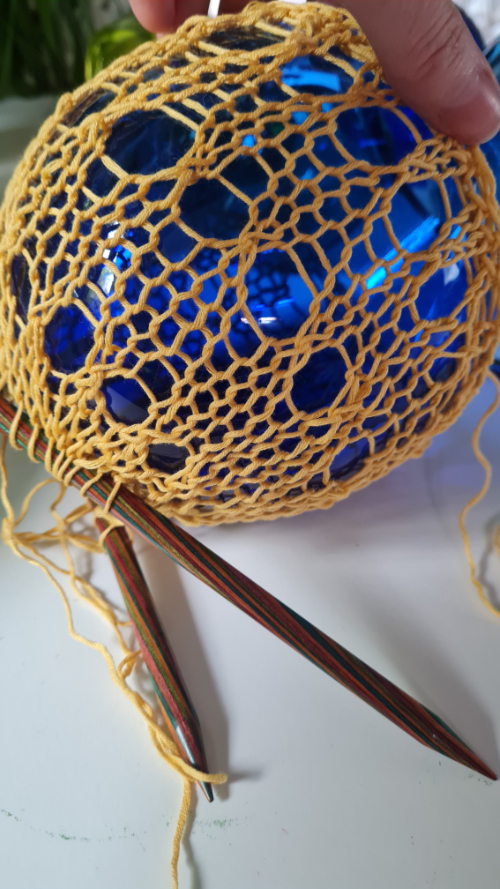
For inspiration, I’m really in love with Plymouth and its surrounding areas. It really is the most beautiful place to live. My ideas usually start with local visual research and then I end up down a rabbit hole of researching something related that catches my imagination. I take notes of colours and often do little sketches and methodical step-by-step thumbnails of the techniques I might use to achieve my ideas. Then I play with those techniques in the studio and go from there.
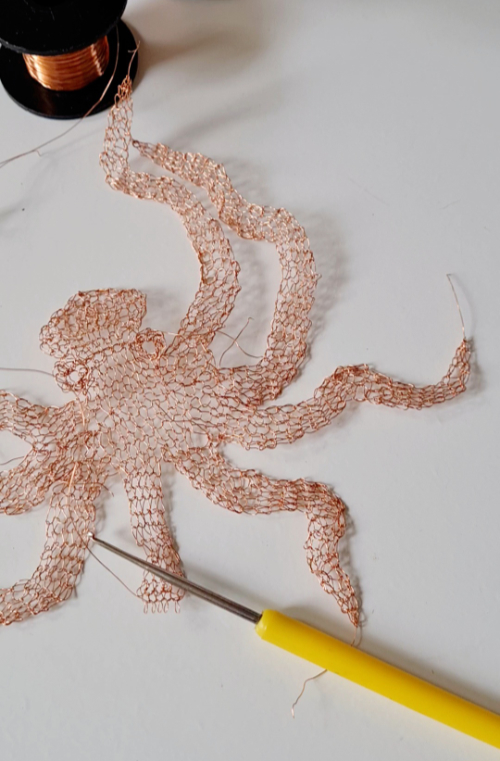
My glass making is more playful than impressively technical, but I do love making a good cut-and-polished surface and think I do it well. My knitted glass work started from very humble beginnings and was a real experimental journey. My knitted copper constructions were heavier and external to begin with. As they became more refined, I experimented with encasing the knitting. My mum has a little collection of wobbly pieces that beautifully illustrate my journey to refining my technique of encasing knitted wire into blown glass.
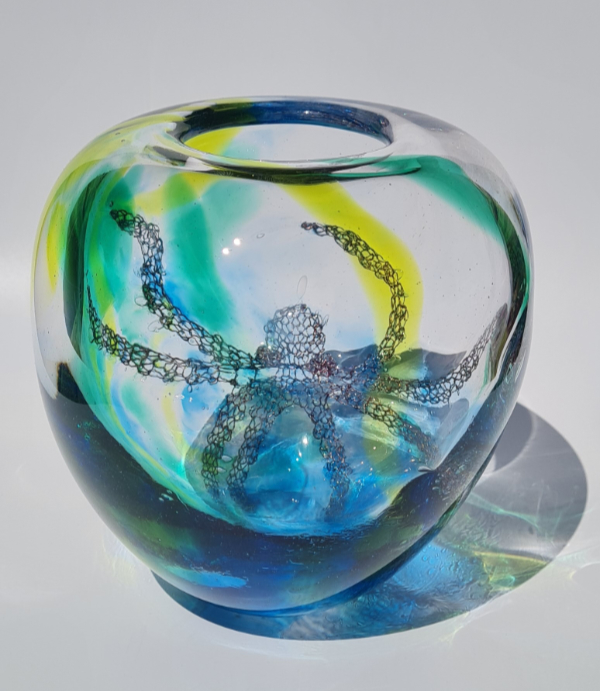
In my Del Mar series the knitted wire is completely encased between the layers of blown glass and I cut and polish the pieces once cold so that you see a cross-section through the piece. It took me a long time to find the right knitting technique that didn’t restrict the glass bubble but stretched with it to a certain extent. These pieces were a real labour of love and were born out of a new and exciting time in my life, so for this reason they are still my favourite pieces to make!
In 2021 I took part in the BBC tv show called ‘Make it at Market’ (MIAM). Before that I’d only just started back in the glass studio after an eight-year break, so the opportunity arrived at just the right time for me when I needed some guidance. It was an absolute joy to be part of MIAM. The people at Flabbergast TV were such a lovely bunch and made the whole experience so much fun. Allister Malcolm was the perfect mentor and I learned so much from the experience. I found that the world had become a lot more digital compared to eight years earlier. The fantastic images of my work taken by Simon Bruntnell made a huge difference to my online presence. MIAM is the gift that keeps on giving. It gave me the tools and confidence to make my creativity into a business, gave me the exposure to sell to a wide audience and provided a welcome boost to help me set up a small coldworking space at home.
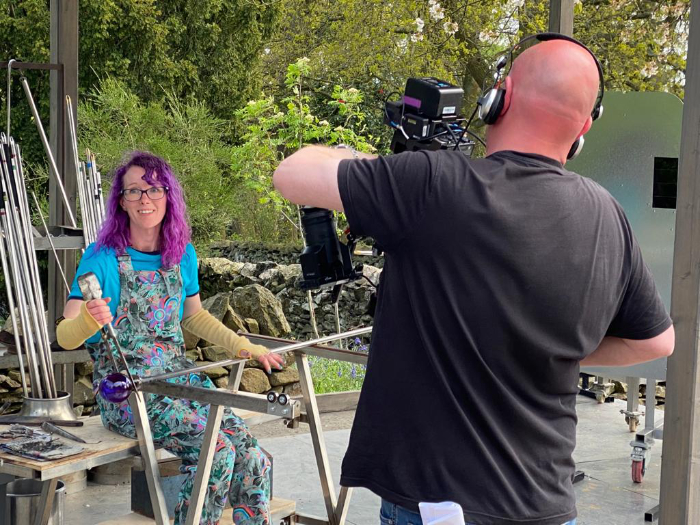
Most recently I’ve been creating free-formed crochet sea creatures that I am encasing in blown glass vessels and I’m just as excited about them. The copper restricts, distorts and pulls at the bubble in the blowing, but trying to control it is part of the fun. I have so many ideas that I’m currently working on for combining knitting and crochet with glass. I also use my open lace knits as stencils on Graal pieces so it appears as if knitting is suspended in the blown glass when, in fact, the original piece of textile is no longer present. I designed and made a collection called Knit One Purl One using this technique. I’m really happy with it, but it has great potential for further development.
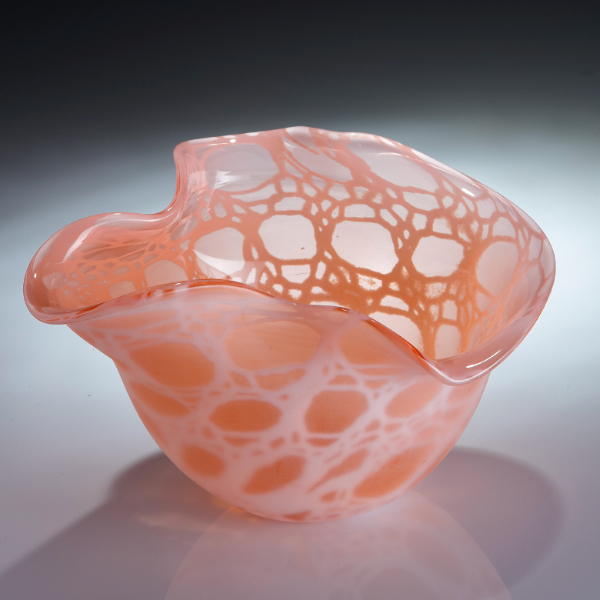
I’ve had an inspirational year. I’ve taken part in some interesting projects with other artists that have helped me to explore my connection with the sea. I joined local artists The Conscious Sisters with their Janner Gansey (fishing jumper) project at The Box. As a group we each knitted a Plymouth Gansey pattern based on local historical photographs. Over the 15-week project various sea-related experts, historians and creatives visited. Alongside this I joined a group exhibition project based around our local estuaries and I was inspired to research people and their lives around the estuary. I found some interesting historical stories that inspired my Shadows of the Sea pieces.
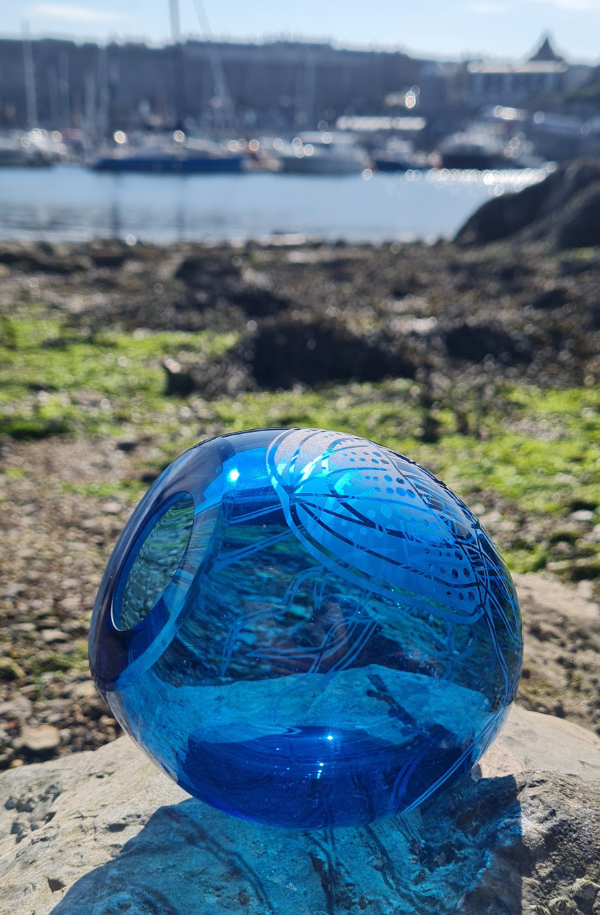
The coming year looks exciting as I’ve just taken on the management of a cooperative at Ian Hankey’s Upcycled Glass Company, based on Brimpts Farm on Dartmoor. It’s a groundbreaking, small sustainable hot glass studio working with waste industrial glass, supported by Make Southwest. We have great plans and want this to be a creative hub open to anyone who is interested in glass blowing. Watch this space…
Find out more about Emmy Palmer and her glass work via her website, Instagram: @emmypalmerglass or Facebook: @emmypalmerglass
Main feature image: Part of Emmy’s ‘Del Mar’ series. Photo: Simon Bruntnell.
